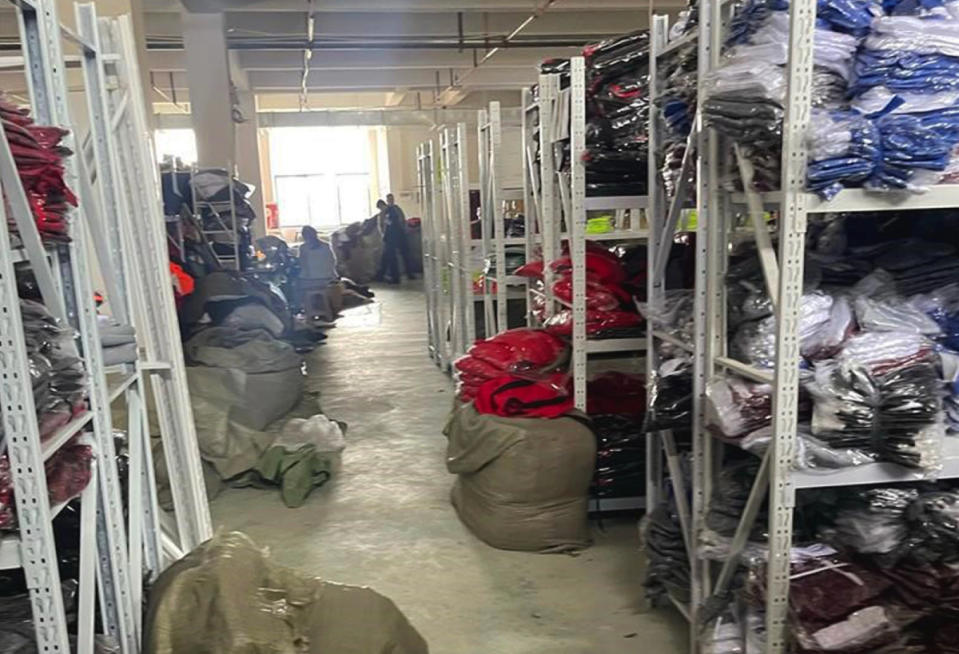Amazon’s Counterfeit Unit Key to Cracking Criminal Enterprises

As counterfeit goods continue saturating the market, Amazon’s Counterfeit Crimes Unit has aggressively pursued counterfeiters around the globe in the three years since it was established in 2020.
Last year was particularly busy for the CCU, with multiple raids not only in the United States, but in several other countries, as well, according to the company’s latest data. In 2022, Amazon sued or referred for investigation more than 1,300 individuals in China, the European Union and the United Kingdom, in addition to the U.S. The unit also disposed of more than 6 million counterfeit products last year.
More from Sourcing Journal
In March, the unit assisted nearly 150 Chinese law enforcement officers to raid five locations suspected of housing automotive counterfeit operations. The teams seized a variety of items, including fake business licenses, 40,000 counterfeit auto accessories and fraudulent car logo stickers representing more than 30 auto brands.
The CCU’s European team partnered with the London Police’s Intellectual Property Crime Unit (PIPCU) and Phillips to disrupt counterfeit rings manufacturing and selling fake electric toothbrush heads. The operation led to the seizure of thousands of fraudulent toothbrush heads and led to the arrest of a man suspected of contributing to the scheme.
“Effective collaboration between private companies and the public sector is key to tackling intellectual property crime and dismantling the organized criminal enterprises that can be found behind it,” said Detective Sergeant Andrew Masterson, London PIPCU. “No single organization or police agency could hope to be effective in combatting an issue of this scale on its own.”

Elsewhere in Europe, Amazon’s CCU also filed a joint civil suit with Brother against a counterfeit ring making fake ink cartridges and referred the case to German law enforcement.
Amazon’s CCU has worked with Chinese law enforcement on seven additional raids against 30 counterfeiters across four cities, confiscating fraudulent clothing and shoes, as well as nearly 50,000 fake labels representing more than a dozen brands. The labels could be attached to knockoff clothing items to deceive customers.
The unit scored a major victory in China last month, after working with luxury brands such as Prada to apprehend a counterfeiter who ultimately pled guilty to crimes related to the sale of fake luxury goods. The defendant was convicted and sentenced to three years in prison and a $25,000 fine.
Amazon’s CCU also filed lawsuits against a group of co-conspirators in connection to a “hidden links” scheme on social media to sell counterfeit luxury items.
The unit said it plans to build on these successes in the coming year to shut down more counterfeit operations and seize fake products.
“We continue to build on our successes, and while we are proud of the progress made, we also know bad actors are constantly evolving their tactics to evade detection,” Amazon’s CCU said in a statement. “We will relentlessly innovate to protect customers and work closely with all stakeholders committed to collaborating with us to remain two steps ahead, as we strive toward the shared goal of eliminating counterfeits across the retail industry.”
Amazon’s brief foray into the physical clothing-store business is coming to an end after less than two years.
“After careful consideration, we’ve decided to close our two Amazon Style physical retail stores and focus on our online fashion shopping experience, where we’re offering new, exciting selection at great value and introducing innovative technology to meet the needs of every customer,” said Amazon spokesperson Kristen Kish. The stores won’t be open for business after Nov. 9. The company is working to help affected employees find new roles internally, and will offer severance and assistance to staff who’d rather move on. Bloomberg first reported the Style shutown news.
For Neil Saunders, managing director of London consultancy GlobalData, quitting the Style game “is symbolically significant in that it represents another retreat from physical non-food retail following last year’s closure of Amazon Books and Amazon 4-Star shops.”
The tech-packed stores tried to combine the “best of shopping on Amazon.com with the benefit of touching and trying on items,” the e-tailer said when it announced the first Style store in Glendale, Calif. early last year. But Saunders described the automated fitting rooms as “an over-engineered solution in search of a problem.”

“Amazon is simply trying to reinvent something for the sake of reinvention and ended up with a business model that was more complex and costly than a regular clothing store,” he added.
Closing the stores suggests that Amazon couldn’t figure out how to scale the experience into “a powerhouse of apparel retail,” Saunders pointed out.
Shutting down Amazon Style represents the latest apparel move at a company that has touted big fashion ambitions. The e-commerce juggernaut recently cut all but three of its in-house clothing brands in a move that came shortly before the Federal Trade Commission announced its long-awaited antitrust lawsuit. It’s still making a go of luxury fashion but there’s no word on whether the venture is a success. The “sustainable” Amazon Aware brand selling apparel, home goods and more survived the company’s private-label cuts.
Amazon might be better off focusing on its core strength: selling massive amounts of clothing online. It now sells 4,000 Victoria’s Secret and Pink products after inking a deal with the lingerie giant. And footwear from TikTok’s cash cow, the D’Amelio family, is also available for sale through Amazon.

